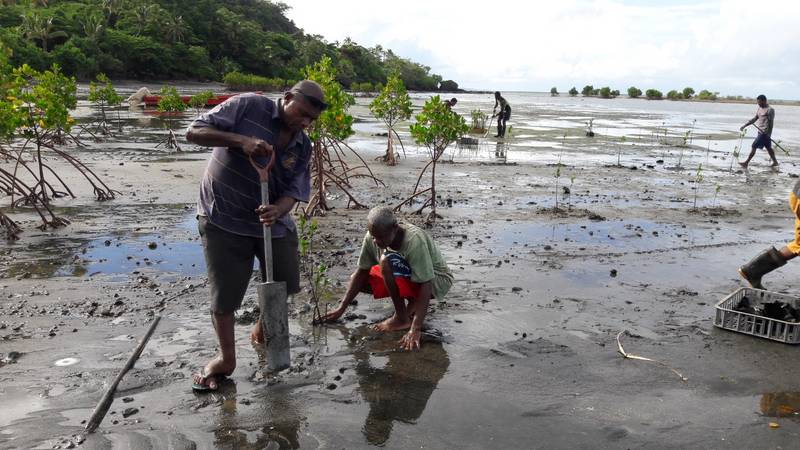Related News

Community participation during mangrove reforestation at Nasau Village, Navitilevu, Ra. Image: Institute of Applied Sciences/USP
By BOBBY BULAMAIVANUATANI
MANGROVES are highly regarded among the community as a robust, neighbouring ecosystem and its conservation is vital from an environmental, economic, and social standpoint, says ecological economist Dr Padma Lal during a public lecture in May at The University of the South Pacific’s Laucala Campus on conserving tiri or mangroves in Fiji.
Dr Lal said mangrove loss was happening at an increasing pace due to misguided knowledge about conversion and agricultural uses.
While the focus of the lecture was on improving mangrove ecosystem governance and whole-of-government decision-making processes, Dr Lal said the loss of mangrove swamps was due to the maximisation of economic growth and profit for private firms.

“We have lost about the same area of mangroves as housed between 1886 to 1990s,” she said.
According to the Review of Policy and Legislation Relating to the Use and Management of Mangroves in Fiji, estimates show that in 1990, the mangrove area was 41,808 hectares while in 2010 it dwindled to 37,980 hectares.
Mangrove areas are seen as prime real estate by private sector developers for multibillion-dollar tourist developments but are not taking into account the after effects of reclaiming mangrove areas.
For instance, a media report on $10 million private residential project in Nasese was on hold due to the development’s destruction on the last remaining mangrove forest along the foreshore. If developed the residents of this areas could face constant flooding, costly road damage and water related health problems.
“Other trends in losses that we are seeing are because of the focus on economic growth in terms of maximizing profit goals for the private sector and because mangrove areas are essentially seen as wastelands.
“Governance issue also has a part to play in the loss of mangroves as there is a lack of clarity over responsibilities and confusion among agencies not knowing who has what powers over what.”
Citing an example, Dr Lal said, the Forestry Department continued to look after the forest reserve, while the Lands Department recently started issuing informally conservation leases.
Fisheries, on the other hand, she said could gazette Marine Protected Areas (MPA).
“We have one arm of the government talking about that they can do this, and another arm is doing something which is supposed to look at things comprehensively. The question is who really the mandate has to manage and look after our mangroves and under what policy?”
“There is a need to shift the obsession with just economic development, growth in financial asset and physical assets and change the narrative, to focus more on valuing of natural assets and resources, improve mangrove governance and collaborative work across agencies to protect the mangrove ecosystem.”
Dr Lal said outdated legislations and unclear overlapping jurisdictions and authorities were also causing confusion in this space.
She noted there was also an absence of overarching guidance over the use and management of mangroves.
“There is no national mangrove ecosystem policy; no national mangrove ecosystem Act. These are things that need to be looked at for us to understand better and management our mangroves,” said Dr Lal, who is renowned for her work in cost-benefit analysis and market and non-market valuation in the areas of mangrove management.
“Mangrove is pivotal in conserving marine ecosystems as it is home to thousands of organisms and acts as a buffer during storm surges.”
She said the idea of the Qoliqoli Bill was to involve more chiefs in maintaining a conservative way to reduce the overuse and destruction of mangroves.